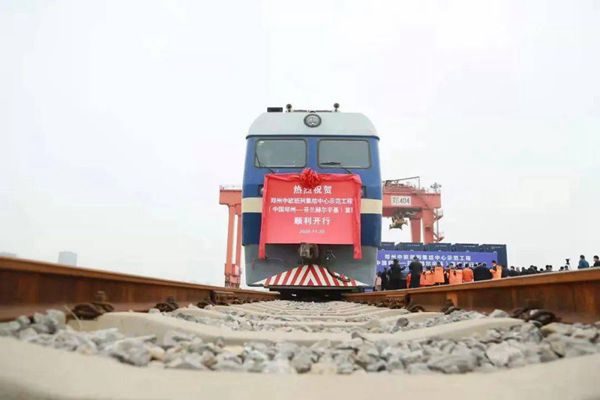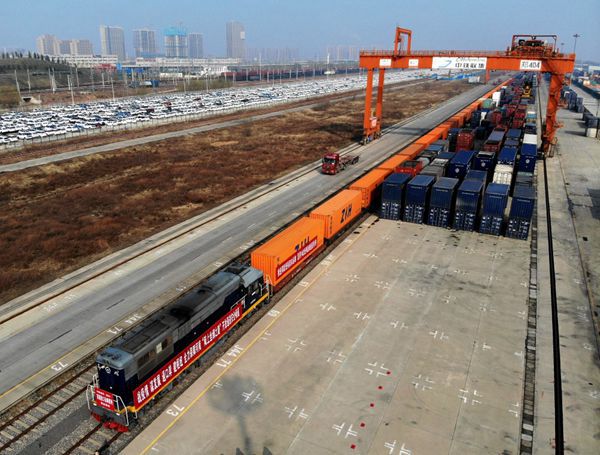By the end of August, 4,850 china-Europe freight trains (Zhengzhou) had run, with a total accumulated cargo value of 20 billion US dollars and cargo weight of 2.76 million tons. From an average of 1 class per month at the beginning of the opening of the bank, it has grown to a high frequency round-trip status of 16 classes per week for outbound trips and 18 classes per week for return trips.
July 18, 2013, the first China-Europe freight train service (Zhengzhou). In the past 8 years, from an average of 1 train per month at the beginning of the operation to 16 trains per week and 18 trains per week, Zhengzhou Has been constantly "growing" and achieved leapfrog development.

The speed of China-Europe express train (Zhengzhou) ranges from 80km/h to 100km/h, from 1 train per month to 16+18 trains per week. The goods transported to Europe range from high-grade clothes and hats, textiles to auto parts, electronic products, construction machinery, medical instruments, aircraft manufacturing materials, tobacco, wine and snacks, etc. The China-Europe freight train provides Zhengzhou with a "convenient channel" to connect with overseas countries.
Affected by the epidemic, international market demand and international logistics have been greatly restricted. As the international shipping capacity is further strained and freight rates continue to rise, China-Europe freight train has become the choice of many foreign trade enterprises with its unique logistics advantages and powerful transportation system.
In the first half of this year, a total of 439 china-Europe express trains (Zhengzhou) ran (285 outbound and 154 return), with a cargo value of us $1.783 billion, up 6% year on year, and cargo weight of 277,200 tons, up 17.8% year on year.
The China-Europe freight trains have not only brought Chinese products abroad, but also made the return train services more regular, providing transport support for the economic and social development of countries and regions along the Belt and Road.
Since 2016, Relying on the business network in Europe, Central Asia, Japan and South Korea, Zhengzhou has established direct cooperation with enterprises in countries along the belt and Road through "direct purchase, direct transport and direct operation", and simultaneously developed online and offline sales network. Now the domestic sales network has covered 31 provinces, autonomous regions and municipalities.

The first Central Asian freight train from Zhengzhou to Tashkent started on July 30 this year. The whistling departure of this freight train marks a key step towards the multi-subject, multi-mode and diversified development pattern of The China-Europe Freight train (Zhengzhou) assembly center, which is of great significance to promote and drive the quality expansion and upgrading of china-Europe freight train (Zhengzhou).
The train was loaded with laminate flooring, bicycles and accessories, fabrics, aluminum wheels for cars, electric cars, squat toilets, wallpaper, tires and other goods, with a total value of about $970,000 and a weight of about 1,440 tons. From Zhengzhou, the train was headed to Tashkent, the capital of Uzbekistan, via Almaty, Kazakhstan. More than 40 per cent of the train is made up of local products.
At present, there are 10 direct overseas stations for China-Europe express train (Zhengzhou), which has built an international logistics channel connecting Zhengzhou with Europe, Central Asia, ASEAN and Asia-Pacific (Japan and South Korea, etc.). The network covers more than 130 cities in more than 30 countries in the EU, Russia and Central Asia, and has more than 6,000 domestic and foreign partners. The logistics network has initially realized the layout of "connecting the domestic and foreign countries, radiating east and West".

